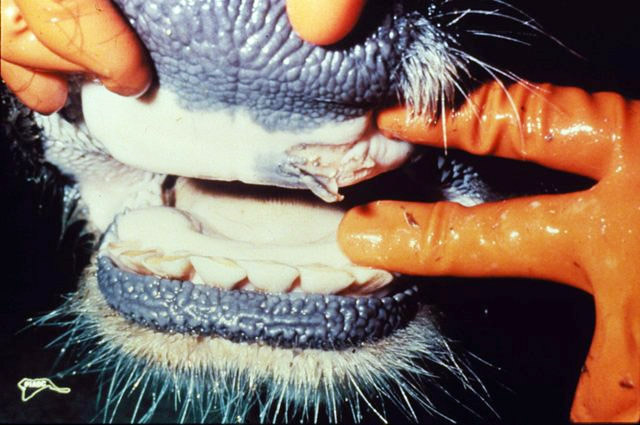
Looking Back
Hoof and Mouth Disease Hits Local Farm
In the fall of 1908, the State of Maryland started killing cattle in Frederick and Carroll counties in an effort to protect residents from falling ill.
Hoof and mouth disease first appeared on H. M. Kneller’s farm in Lineboro, where it was reported that his entire herd was affected. It is an infectious and sometimes fatal disease that attacks cloven-hoofed animals. It causes a high fever that lasts for days and forms blisters in the animal’s mouth and near the hoofs. If the blisters near the hoofs rupture, it may cause lameness.
“The meat of the infected animals, it is said, is not particularly dangerous as food for mankind, although it is by no means fit to eat; but the milk from infected cows is dangerous, and the disease may be spread to human beings through butter or cheese as well,” the Frederick News reported.
The cause of the outbreak was traced to a single cow that arrived among a railcar full of cattle from Buffalo, New York.
“To stamp out this disease, which it is said attacks animals only having cloven hoofs, the U. S. and State officials have taken every precaution, quarantining the farm and entire state,” the Catoctin Clarion reported.
The State of Maryland, in consultation with the federal government, instituted a strict quarantine for the farm. The animals were limited in their movements and even the residents of the farm faced “severe restrictions,” according to the Frederick News. Susceptible animals were not allowed to cross the state lines.
The initial belief was that all the animals on the Kneller Farm would need to be killed. However, as the outbreak seemed to be contained, it was decided that only the cattle and hogs would need to be killed.
This did not sit well among the local farmers, who argued that the animals could recover from the disease. However, the government argued that while that was the case, it would also require that the state stay in quarantine for six months or more until it was certain that all the infected animals had recovered and there were no new cases.
Then, another problem arose, when infected cattle were found on a nearby farm owned by W. L. Wentz. Six of his seven cattle were infected. Because of the nearness of the Kneller Farm, it was initially thought that one of Kneller’s cattle was the cause, but it was determined that another animal on the train from Buffalo, perhaps the same one that infected Kneller’s cattle, had infected Wentz’s.
The government decided to proceed with the killing of Kneller’s infected animals. It had to be delayed, though, because Dr. F. H. Mackie, the state veterinarian, couldn’t find anyone local who was willing to dig the six-foot-deep pit that was needed. The locals did not support the government’s decision to kill all the animals. Mackie had to hire a contractor from Pennsylvania to come in and dig the pit.
Mackie then oversaw the killing and burial of 24 cattle and 52 hogs. About 50 area farmers gathered on the county road that ran next to the farm and about 100 yards from the burial pit, which was about 10 feet by 40 feet and 7 feet deep.
“The killing began at 1 and was finished at 5 o’clock. The hogs were thrown on top of the cattle in the pit and a thick layer of quick lime spread over the carcasses. The hole was filled, then earth being piled up in a mound,” The Baltimore Sun reported.
Although the chickens weren’t killed, they all had to be dipped in a disinfecting solution. The barn, barnyard, and hog pen were also all thoroughly disinfected.
“The Kneller farm will probably be quarantined until every trace of the disease is eradicated by disinfection,” according to The Sun.
The quarantine was eventually lifted near Christmas, just in time for the holidays. The Sun reported, “The effect of the quarantine is especially noticeable in Washington by the scarcity of veal, very little being on the market. What there is available is said to be bringing high prices.”
Although Kneller was partially responsible for the high prices, he didn’t benefit from them. He was reimbursed $1,300.83 for the lost livestock ($805.20 for the 24 cattle and $495.03 for the 52 hogs). The State of Maryland paid one-third of the cost, and the United States Department of Agriculture paid the other two-thirds.
Photo shows the effect of Hoof and Mouth disease on an animal’s mouth.

